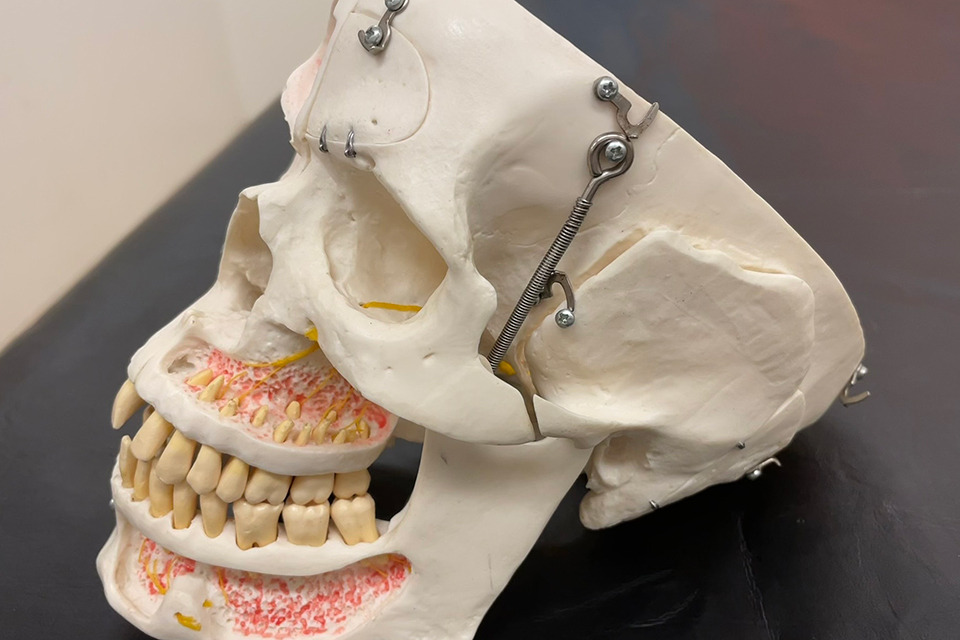A unique program is arriving at the Faculty of Medicine, a first in Canada that’s addressing a global need in medical education.
The current worldwide lack of individuals who are highly qualified in anatomy instruction prompted the Faculty of Medicine to launch the Master of Applied Science in Anatomical Sciences Education, an innovative program only recently approved at the provincial level.
The master’s program was initiated and developed under the leadership of Dr. Alireza Jalali, head of anatomy and associate professor at the Faculty. The research paper-based, 20-month program is offered by the Faculty’s Department of Innovation in Medical Education (DIME) and focuses on anatomy education and modern medical education principles.
Leveraging expertise and modern facilities
The program aligns with the unique strengths of DIME, which not only possesses the required expertise to teach in this laboratory course-intensive program and to supervise students in education scholarship projects, but also leverages its modern human anatomy laboratory to blend instruction in both anatomy and cutting-edge teaching and innovation in medical education.
“This unique, bilingual master’s program will meet the increasingly critical need for instructors trained in human cadaveric anatomy and prepare students for a career in teaching anatomy in the health sciences,” says Dr. Jalali.
Learners will develop clinically relevant anatomy knowledge, teaching skills and anatomy education scholarship during their first year. After that, they will benefit from immediate, hands-on application of this acquired knowledge in their second year, when they will serve as anatomy teachers in the Faculty’s undergraduate medical program and conduct education scholarship projects.
Unique program a Canadian first
Dr. Chris Ramnanan, program director and associate professor in DIME, will ensure the program curriculum is modern and in line with the needs of the job market, and will play a teaching and supervisory role. He is excited to welcome the first cohort of students in fall of 2023 to this unique program.
“This is the first graduate anatomy education program in Canada to offer all its courses to both English and French learners,” he says. “Further, the opportunity to immediately apply training in anatomy and in education scholarship—as teachers in the medical program, and in their own research projects—is a valuable and novel aspect that is unique to Canada.”
The program is designed for individuals who are invested in careers as educators in the anatomical sciences. Despite having a spectrum of quality undergraduate and graduate programs in the health sciences, there are no programs at the University of Ottawa that provide comprehensive, dissection-based training in human anatomy.
“Globally, highly qualified individuals with both knowledge and experience in anatomy instruction, especially in the context of cadaveric laboratories, to teach in undergraduate and professional health care programs, are in short supply,” says Dr. Ramnanan. “This program will successfully address these gaps.”
Developing confidence in novel teaching methods
Dr. Nadine Wiper-Bergeron is the assistant dean for Graduate and Postdoctoral Studies at the Faculty, as well as a professor in Cellular and Molecular Medicine and a member of the Division of Anatomy. She will provide instruction to program learners in both English and French and act as a research supervisor for projects in anatomy education research.
“Students will complete a research paper in the area of anatomy education scholarship, a broad field of education research and scholarship,” she explains. “It includes optimizing the delivery and assessment of anatomy content in modern anatomy courses at all levels, incorporating modern teaching technologies (including point-of-care ultrasound) in the delivery of anatomy for health care professionals, and assessment of anatomy knowledge in competency-based health care programs.”
Individuals in comparable programs in the United States have applied their foundation of anatomy knowledge to benefit patients in the domains of medicine, dentistry, physiotherapy and pathology. They’ve also successfully leveraged their education scholarship training to pursue further studies at the PhD level in education research.
Such research is important, says Dr. Ramnanan, as educators are continually looking to improve and innovate in terms of their approaches to teaching anatomy. They are also universally invested in increasing the amount of student-centered learning in their anatomy courses, whether this is by incorporating modern technological tools or by adopting established ‘flipped classroom’ approaches such as case-based learning to their teaching.
Educators are also trying to increasingly leverage laboratory-based instruction in the development of life-long learning and skills relevant to working in health care teams, such as competencies related to interprofessional collaboration, communication, and professionalism.
“Modern educators need to be aware of these approaches and have the confidence to apply novel teaching methods to their classrooms and laboratories,” he says.
“Our program lays the groundwork for such progress.”
Individuals may apply to the master’s program before March 1, 2023.
Consider supporting the University of Ottawa.
The School of Anatomy fund supports the priorities of the School of Anatomy.

